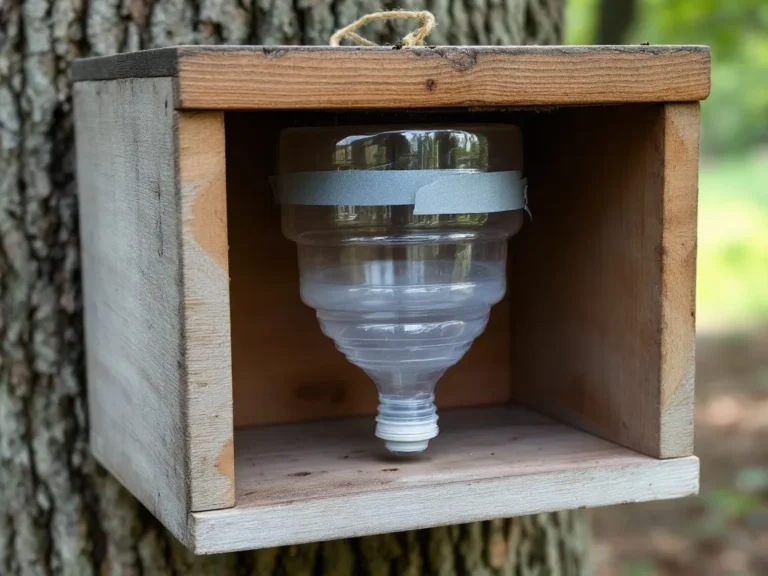Carpenter bees, those large, buzzing insects that many mistake for bumblebees, are a common sight in gardens and near wooden structures. While they may seem intimidating, these bees play a significant role in pollination, which is vital for our ecosystems. However, their nesting habits can cause considerable damage to wooden structures, leading to a dilemma for homeowners and gardeners alike.
The Pollination Power of Carpenter Bees
Carpenter bees are excellent pollinators. Unlike honeybees, which live in colonies and produce honey, carpenter bees are solitary creatures. They don’t produce honey, but their role in pollinating plants, especially in gardens, is invaluable. They are particularly efficient at pollinating open-faced flowers like sunflowers, daisies, and eggplants. By visiting these flowers, carpenter bees help ensure the production of fruits and seeds, which are essential for the continuation of various plant species.
The Downside: Structural Damage
While their contribution to pollination is undeniable, carpenter bees have a darker side. These bees are named after their ability to bore into wood, creating tunnels where they lay their eggs. Unlike termites, they don’t eat wood; instead, they excavate it to create a nesting site. This activity can weaken wooden structures, leading to unsightly holes and potentially significant structural damage over time.
Carpenter bees prefer untreated, unpainted wood, especially softwoods like pine, cedar, redwood, and cypress. Decks, fences, eaves, and wooden siding are all common targets. The bees often return to the same nesting sites year after year, which can exacerbate the damage. Over time, these small holes can lead to moisture intrusion, wood rot, and an invitation for other pests like ants or woodpeckers, further compounding the problem.
Prevention and Protection
Preventing carpenter bee damage starts with understanding their behavior and preferences. Since carpenter bees prefer untreated and unpainted wood, one of the most effective preventive measures is to treat or paint exposed wood surfaces. Stains and sealants can also deter these bees, but paint is generally more effective because it completely covers the wood grain.
Another approach is to use hardwoods in construction, as carpenter bees are less likely to bore into them. However, this isn’t always practical or cost-effective, especially for large structures. In such cases, homeowners can install metal flashing or mesh over vulnerable areas to prevent bees from gaining access.
For those who already have carpenter bee infestations, there are several strategies to address the problem. Plugging the holes with wood putty or caulk can help, but it’s essential to do this after ensuring that all bees have left the nest. This typically means waiting until late fall when the bees have finished their life cycle. In some cases, it might be necessary to use insecticidal sprays or dust to eliminate active infestations, but this should be done with caution, as it can harm other beneficial insects.
Coexisting with Carpenter Bees
Despite the damage they can cause, it’s important to remember that carpenter bees are beneficial insects. Their role in pollination is crucial, especially in gardens where they contribute to the growth of various plants. Instead of viewing them solely as pests, we should consider ways to coexist with these bees while protecting our properties.
One way to achieve this balance is by providing alternative nesting sites. Installing bee houses or drilling holes in logs or wooden blocks can attract carpenter bees away from vulnerable structures. These alternative nests allow the bees to continue their beneficial activities without causing damage.
Additionally, educating ourselves and others about the importance of pollinators, including carpenter bees, can help shift the perspective from seeing them as nuisances to recognizing their value in our ecosystems.
Conclusion: Finding a Balance
Carpenter bees present a unique challenge for homeowners and gardeners. On one hand, they are essential pollinators that contribute to the health of our gardens and ecosystems. On the other hand, their nesting habits can cause significant damage to wooden structures. By understanding their behavior and taking proactive steps to protect our properties, we can find a balance that allows us to coexist with these important insects.
Preventative measures, such as treating or painting wood and providing alternative nesting sites, can reduce the risk of damage while still supporting the bee population. With a little effort and understanding, we can protect our homes and gardens while preserving the vital role that carpenter bees play in our environment.
This approach not only benefits our immediate surroundings but also contributes to broader efforts to protect pollinators, which are essential for the health of our planet. By fostering a coexistence with carpenter bees, we can ensure that these fascinating insects continue to thrive while minimizing their impact on our built environments.
Resources
- University of Maryland Extension: For detailed information on the behavior and management of carpenter bees, the University of Maryland Extension offers valuable resources. Visit their article on Carpenter Bees for more insights.
- National Pesticide Information Center (NPIC): The NPIC provides guidance on the safe use of insecticides to manage carpenter bee infestations. Learn more at NPIC.
- USDA Forest Service: For in-depth research on wood protection and pest management, the USDA Forest Service offers a range of publications. Access their resources at USDA Forest Service.
- Xerces Society for Invertebrate Conservation: For information on supporting pollinator populations, including carpenter bees, the Xerces Society provides extensive resources on habitat protection. Explore their website at Xerces Society.
- Environmental Protection Agency (EPA): The EPA offers guidelines on environmentally friendly pest control methods. For more details, visit EPA’s Pest Control.





